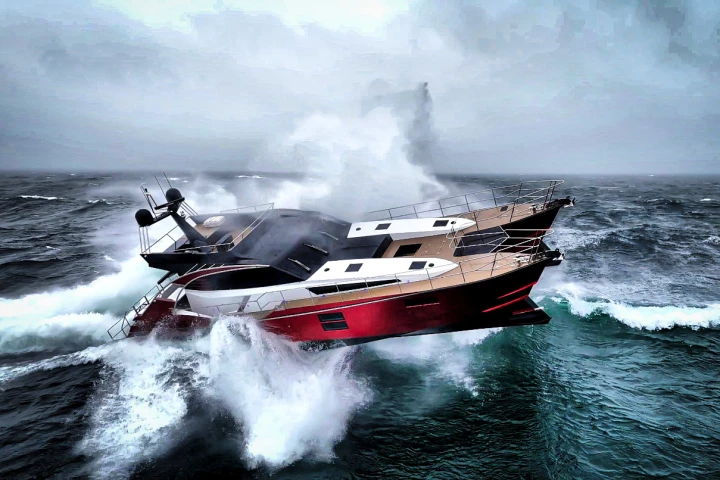Wave
-
A team of Australian bodyboarding ratbags has managed to capture staggering footage of an extraordinary oceanic phenomenon: a place where four 12-ft (3.7-m) waves regularly converge into an oval dip, with explosive results.
-
Scientists have hacked the meaning of a "light meal," creating microlasers that use natural products to emit beams through food. They're also completely safe to eat. It's the first demonstration of laser emission from an entirely edible system.
-
Ireland's Safehaven Marine builds search and rescue craft, patrol boats and pilot boats designed to operate in "all weather" – up to and including Force 10 storms with waves up to 23 ft (7 m) high. The firm backs this up with some spectacular testing.
-
Unpredictable monster waves at sea can severely damage ships and offshore platforms, putting the lives of those who work on them at risk. A new system out of the University of Maryland uses a neural network to provide valuable early-warning alerts.
-
Sweden's CorPower has announced "breakthrough" results from Atlantic ocean testing of its full-scale floating generators, which cleverly time their motions to amplify smaller waves while protecting themselves against dangerous storm conditions.
-
Scientists at MIT have directly captured signs of “second sound” in a superfluid for the first time. This bizarre phenomenon occurs when heat moves like sound waves through an unusual state of matter.
-
Gigantic waves can seemingly come out of nowhere, threatening ships and oil rigs. Now, an AI system trained on centuries of data has been able to predict when these rogue waves will occur, revealing new insights into how they form.
-
With the aid of arms control technology and artificial intelligence, a team of scientists at Cardiff University's School of Mathematics has developed a method that uses underwater microphones to provide early warnings of potentially deadly tsunamis.
-
Much of the heat and carbon produced by humans is absorbed by the ocean. New research has shed light on the role that underwater waves play in moving that heat and carbon around our oceans, an important factor in predicting climate change.
-
Irish company OceanEnergy has already tested its oscillating water column generators at significant scale in Hawaii, and it's just signed on to a four-year project to test, validate and commercialize its biggest unit yet off Orkney, in Scotland.
-
The UniWave sea platform is an artificial blowhole that harvests energy from ocean waves. Independent analysis now predicts it'll create some of the cheapest renewable energy on the market – and some of the most reliable and predictable, as well.
-
A new class of elastic energy converters is emerging, with the ability to capture energy from a variety of different motions. The National Renewable Energy Laboratory is pushing to deploy them, first in a series of strange, bendy wave energy designs.
Load More











